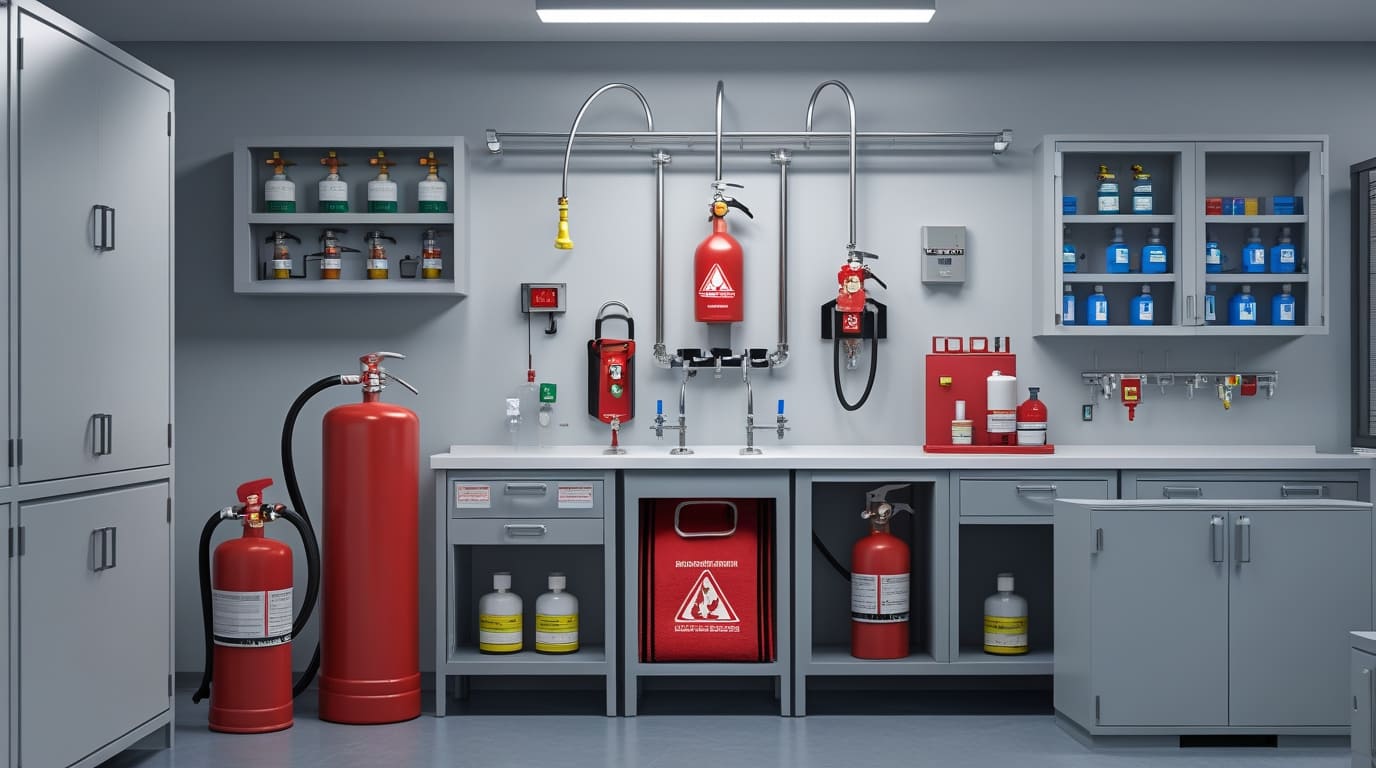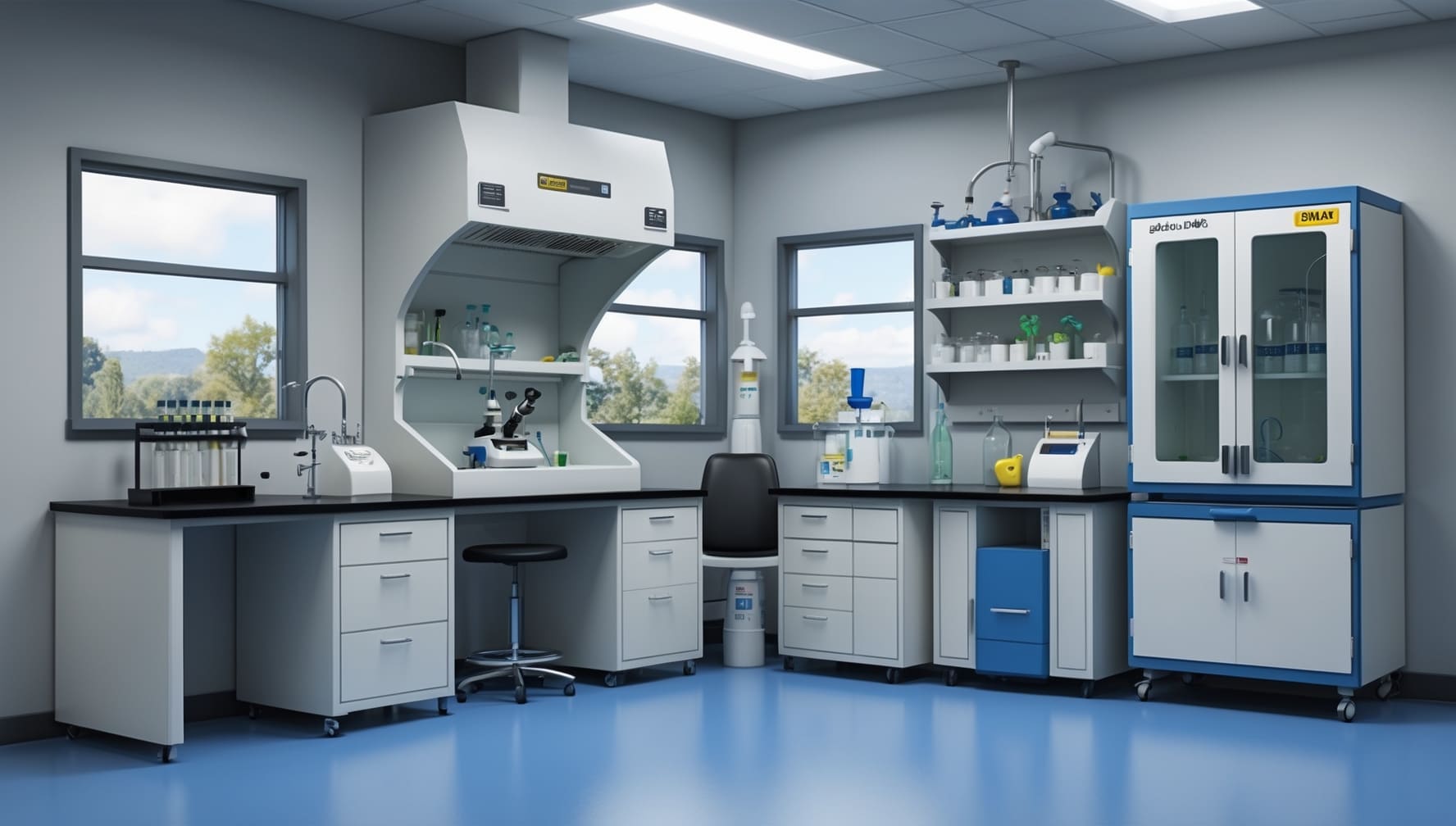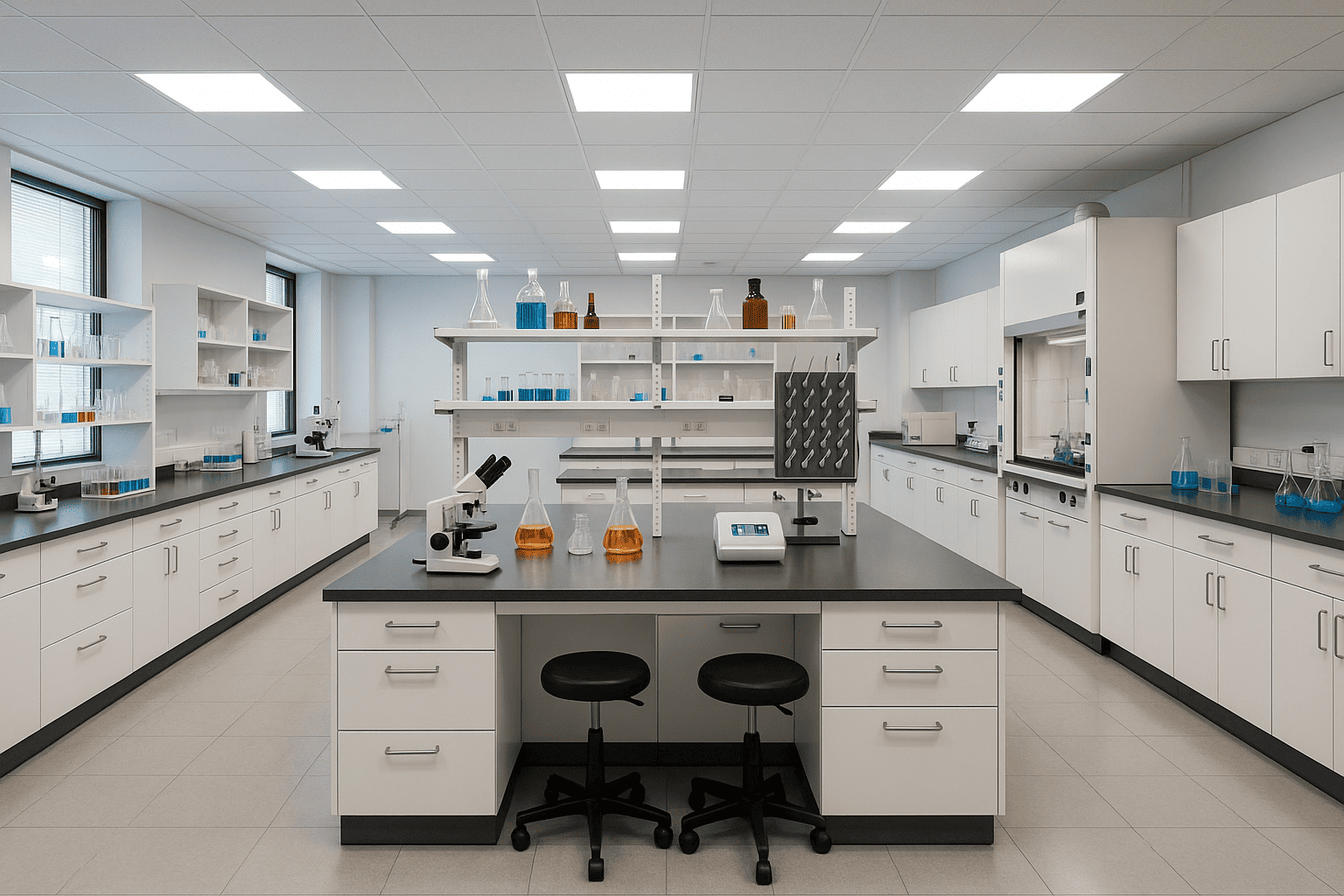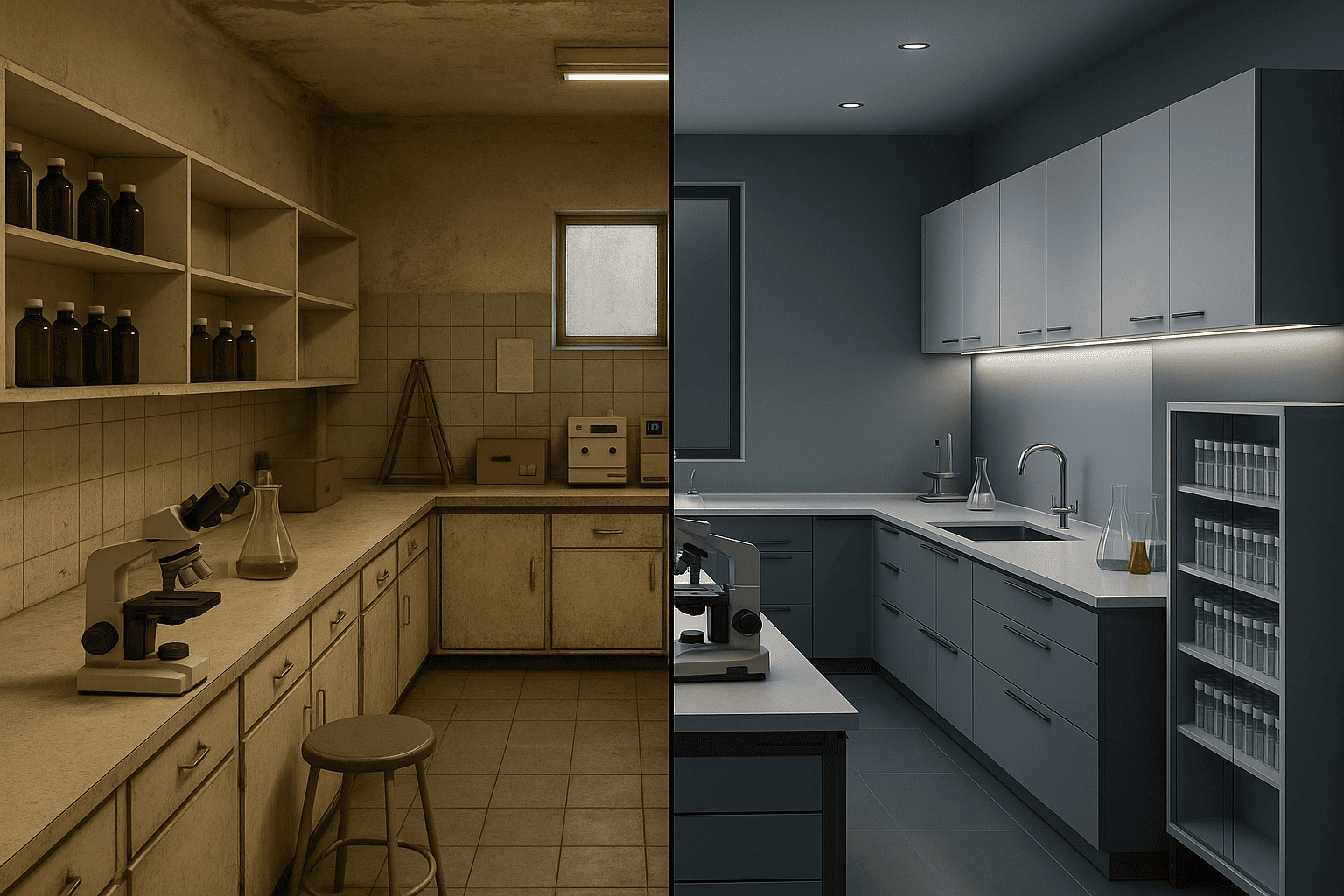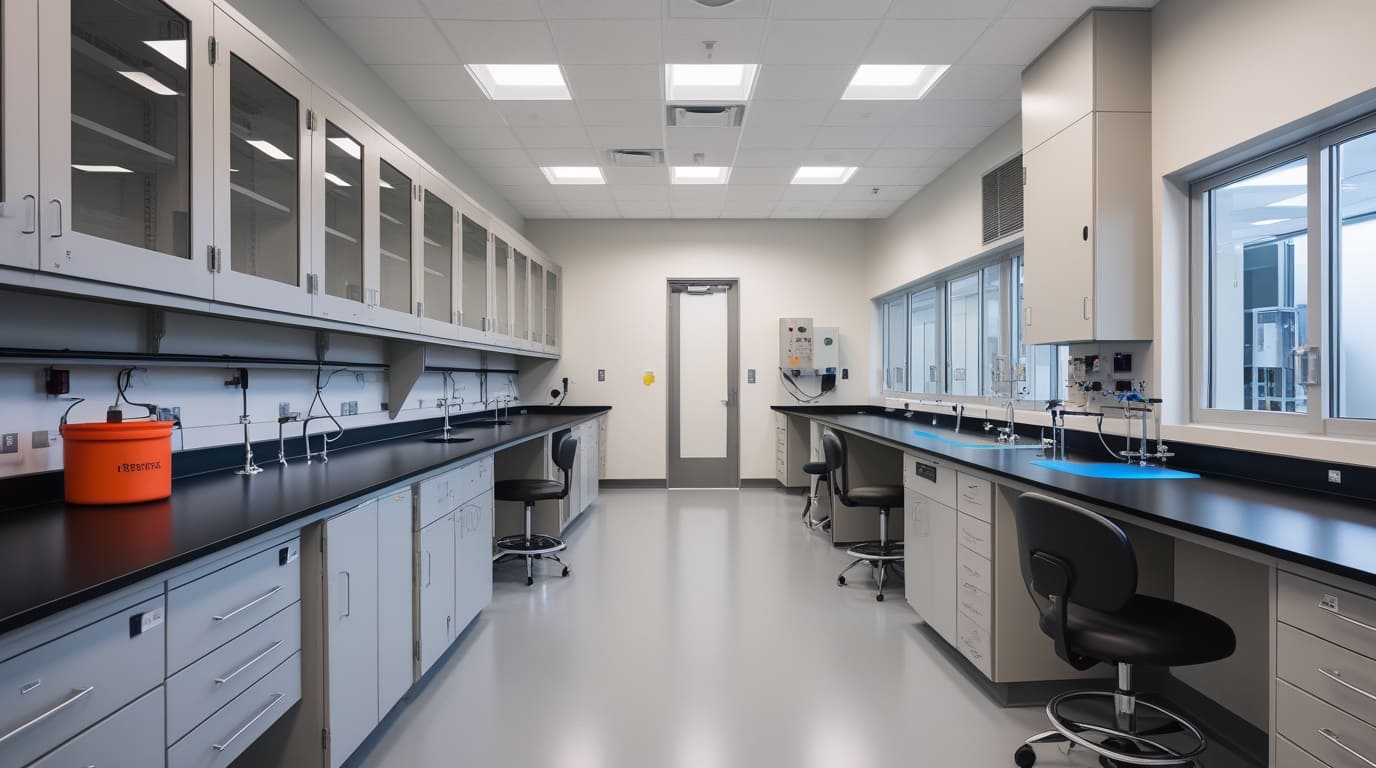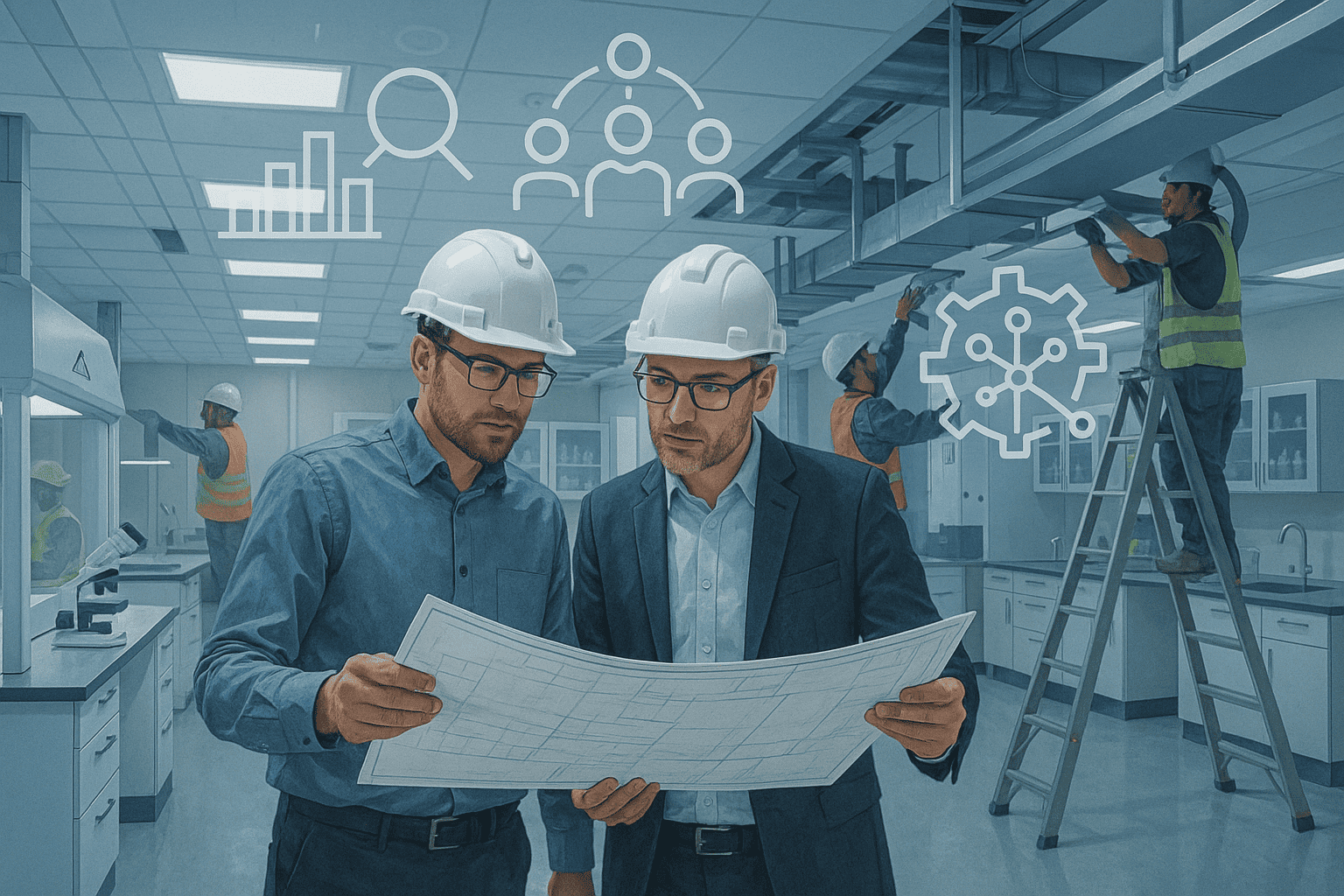
Working in a laboratory is an essential part of scientific research, innovation, and education. Whether you’re a student, scientist, or lab technician, understanding and following safety precautions is critical to ensure a safe and productive environment. Accidents in laboratories can lead to serious injuries, chemical exposure, or even fire hazards. That’s why having a clear understanding of basic lab precautions can protect both individuals and the integrity of experiments.
In this article, we’ll highlight 10 essential laboratory safety rules that every lab personnel should follow, along with why these rules are important.
1- Always Wear Appropriate Personal Protective Equipment (PPE)
One of the most basic and important precautions is wearing the correct PPE. This includes lab coats, gloves, safety goggles, and sometimes face shields or respirators, depending on the substances being handled. PPE protects your body, eyes, and skin from harmful chemicals and biological materials. Never enter the lab without proper gear, and make sure it’s always clean and in good condition.
2- Know the Location of Safety Equipment
Every laboratory is equipped with emergency tools like fire extinguishers, eyewash stations, first aid kits, fire blankets, and emergency showers. Familiarize yourself with the location and usage of these items. In the case of an emergency, quick access to this equipment can make a critical difference.
3- Understand Chemical Hazards and Labels
Before handling any chemical, read its label and Material Safety Data Sheet (MSDS). Understand the potential risks, safe handling procedures, and necessary first aid measures. Proper labeling helps identify substances quickly and reduces the chance of mixing incompatible chemicals.
This is a core part of following safety rules in the laboratory, as improper handling or storage of chemicals is one of the most common causes of lab accidents.
4- Never Eat, Drink, or Apply Cosmetics in the Lab
Bringing food, beverages, or personal items like makeup into the lab can cause accidental ingestion or contamination. Even a small amount of chemical residue on a surface can be harmful if transferred to your mouth or eyes. A strict no-food or drink policy is a universal standard in all labs.
5- Practice Proper Waste Disposal

Laboratories generate different types of waste including chemical, biological, and sharp objects like broken glass or needles. Each type must be disposed of in specific containers. For example, biohazard waste must go into red bags, while sharp items go into designated sharps containers. Never dispose of lab waste in general trash bins.
Practicing correct disposal is a fundamental part of laboratory safety, preventing environmental contamination and accidental exposure to hazardous substances.
6- Avoid Working Alone in the Lab
Always have a partner or supervisor present when working with chemicals, open flames, or any equipment that poses a risk. In the case of an accident, having someone nearby can be life-saving. If working alone is unavoidable, make sure someone knows where you are and checks in regularly.
7- Label and Store Chemicals Properly
All chemicals and samples must be clearly labeled with names, concentrations, dates, and potential hazards. Improper storage or labeling can lead to dangerous mix-ups or reactions. Use appropriate containers, and always store flammable or reactive chemicals in fire-resistant cabinets.
Following correct storage protocols is one of the basic safety measurements in laboratory practice, especially in research and pharmaceutical settings.
8- Maintain a Clean and Organized Work Area
A cluttered lab bench is a hazardous lab bench. Always clean up spills immediately, return equipment to its proper place, and dispose of unused materials. Regular housekeeping prevents cross-contamination and makes emergency evacuations easier and safer.
9- Use Fume Hoods and Ventilation Systems

When working with volatile chemicals, gases, or toxic fumes, use a properly functioning fume hood. These systems are designed to capture harmful vapors and protect the user from inhaling them. Always check the airflow before use and ensure that the sash is at the proper height.
This is a core part of ensuring laboratory safety rules are followed when dealing with hazardous air-borne substances.
10- Stay Alert and Report All Accidents Immediately
Whether it’s a minor spill, a cut, or broken equipment, always report it immediately. Ignoring or hiding accidents can lead to larger problems down the line. Documenting all incidents helps the lab identify patterns and implement better safety protocols in the future.
Being alert also includes avoiding distractions like mobile phones or headphones while working in active lab areas.
Why These Safety Precautions Matter
Safety in a laboratory is not just about avoiding accidents — it’s about creating a culture of responsibility, awareness, and respect for the potential hazards involved in scientific work. Adhering to these laboratory safety rules not only protects individuals but also ensures that scientific research continues smoothly, without unnecessary interruptions or setbacks.
Final Thoughts

Laboratories are places of discovery and innovation, but they also come with inherent risks. By following these 10 essential precautions, you can reduce those risks significantly. Whether you’re a new student or an experienced professional, never underestimate the importance of good lab habits.
To summarize:
- Wear the right PPE.
- Know where emergency equipment is.
- Read chemical labels and data sheets.
- Don’t eat or drink in the lab.
- Dispose of waste properly.
- Don’t work alone if avoidable.
- Label and store chemicals safely.
- Keep your space clean and organized.
- Use fume hoods when necessary.
- Report all accidents, no matter how small.
Staying informed and vigilant is the key to practicing effective laboratory safety in every situation.
Remember: A safe lab is a successful lab.

